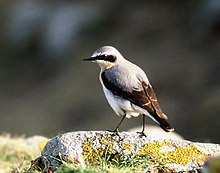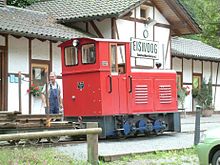
The Möhne Reservoir, or Moehne Reservoir, is an artificial lake in North Rhine-Westphalia, some 45 km east of Dortmund, Germany. The lake is formed by the damming of two rivers, Möhne and Heve, and with its four basins stores as much as 135 million cubic metres of water.
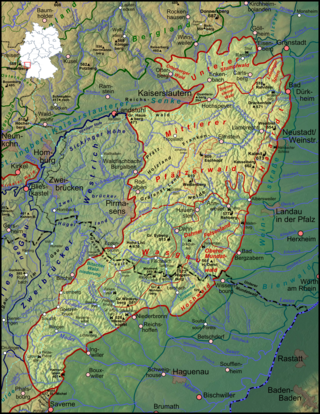
The Palatinate Forest, sometimes also called the Palatine Forest, is a low-mountain region in southwestern Germany, located in the Palatinate in the state of Rhineland-Palatinate. The forest is a designated nature park covering 1,771 km2 and its highest elevation is the Kalmit.
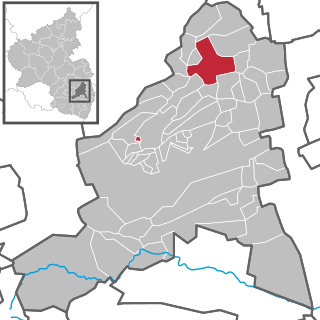
Grünstadt is a town in the Bad Dürkheim district in Rhineland-Palatinate, Germany with roughly 13,200 inhabitants. It does not belong to any Verbandsgemeinde – a kind of collective municipality – but is nonetheless the administrative seat of the Verbandsgemeinde of Leiningerland.

Ebertsheim is an Ortsgemeinde – a municipality belonging to a Verbandsgemeinde, a kind of collective municipality – in the Bad Dürkheim district in Rhineland-Palatinate, Germany.

Hochstätten is an Ortsgemeinde – a municipality belonging to a Verbandsgemeinde, a kind of collective municipality – in the Bad Kreuznach district in Rhineland-Palatinate, Germany. It belongs to the Verbandsgemeinde of Bad Kreuznach, the seat of which is in the like-named town. Hochstätten is a winegrowing village. The municipality also markets itself as a recreational destination with the self-given nickname das Tor zur Pfalz im Erholungsgebiet Rheingrafenstein.

The Sorpe Dam is a dam on the Sorpe river, near the small town of Sundern in the district of Hochsauerland in North Rhine-Westphalia, Germany.
The Palatine Northern Railways Company – abbreviated to Palatine Northern Railway - was founded on 17 April 1866 as the last of the three major private railway companies in the Bavarian province of the Palatinate.
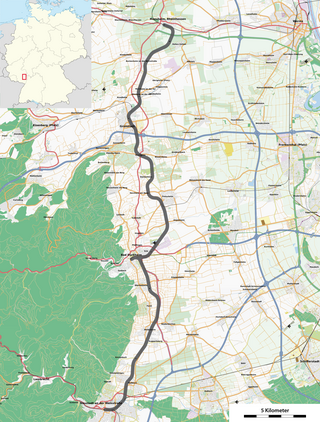
The Palatine Northern Railway is a non-electrified single-track main line that connects Neustadt (Weinstr) Hbf with Monsheim in the German state of Rhineland-Palatinate. It was opened between 1865 and 1873 in three stages. With the replacement of the old Ludwigshafen terminus with the modern Ludwigshafen Hauptbahnhof through station in 1969, Bad Dürkheim station became the only station in the form of a terminus in the Palatinate region. Passenger services over the Grünstadt–Monsheim section were discontinued in 1984, but re-established in 1995.

The Windgfällweiher is a reservoir between the Titisee and the Schluchsee in the south of Baden-Württemberg, Germany. It is located within the High Black Forest and lies in a hollow formed by ice age glaciation between the villages of Altglashütten, Falkau and Aha on the territory of the municipality of Lenzkirch.

The Pfrimm is a 42.7-kilometre-long (26.5 mi), left or western tributary of the Rhine in the Rhineland-Palatinate (Germany).

The Eisbach, locally known as die Eis, is a 38-kilometre (24 mi) long river and left or western tributary of the Rhine in the northeastern Palatinate and southeastern Rhenish Hesse, in the German state of Rhineland-Palatinate.
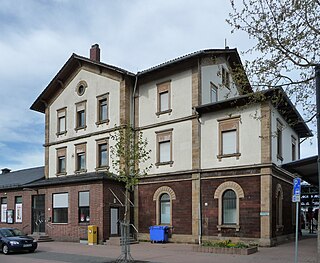
Grünstadt station is a railway junction where the Palatine Northern Railway connects with the Eis Valley Railway and the disused tracks of the Leiningen Valley Railway and the Worms–Grünstadt railway. It is one of three stations in the urban area of Grünstadt in the German state of Rhineland-Palatinate. The station's entrance building of 1873 as well as parts of the premises are protected as monuments. It is classified by Deutsche Bahn as a category 4 station.

The Eckbachweiher in the Palatine Leiningerland in the German state of Rhineland-Palatinate is a woog on the Eckbach stream. A woog is the name given to still bodies of water, especially man-made reservoirs, in southwest Germany.

The Stumpfwald is part of the northern Palatine Forest and is located in the south of the German state of Rhineland-Palatinate. It covers an area of about 150 km2, most of which is part of North Palatinate and runs from west to east on the territories of Enkenbach-Alsenborn and Ramsen. It has given its name to the Stumpfwaldgericht, an old thingstead, and the heritage line of the Stumpfwald Railway.
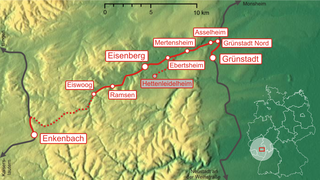
The Eis Valley Railway is a branch line in the German state of Rhineland-Palatinate, that runs through the Palatine Forest. It runs from Grünstadt in a southwesterly direction through the valley of the Eisbach to Enkenbach. The section from Grünstadt to Eisenberg was opened as early as 1876 by the Palatine Northern Railway Company. The iron ore industry in and around Eisenberg gave the line considerable importance for the transport of goods, whilst passenger services played a rather secondary role. The remaining stretch of line to Enkenbach was not completed until 1932 under the direction of the Deutsche Reichsbahn. After passenger services had been withdrawn in 1976, strategic considerations during the Cold War prevented its complete closure. Goods traffic between Eisenberg and Enkenbach ended in 1988. In the period from 1994 to 2001 the line between Grünstadt and the Eiswoog reservoir was re-opened; the remaining section, however, stayed closed. Goods traffic ceased entirely in 2001.

The Stumpfwald Railway is a 600 mm narrow gauge heritage railway that has operated since 1996 in the Stumpfwald, a woodland area in the north of the Palatine Forest in the municipality of Ramsen.
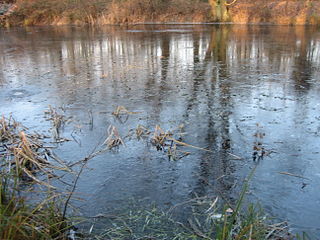
A woog is the local name for a body of still water in parts of southwest Germany. A woog may be of natural origin or manmade.
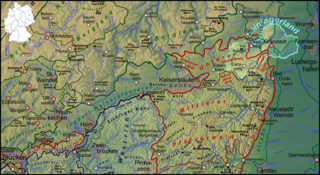
The Leiningerland is an historic landscape in the Palatinate region in the German federal state of Rhineland-Palatinate. It is named after an aristocratic family that used to be the most important in the region, the House of Leiningen.

Enkenbach station is the only station in Enkenbach-Alsenborn in the German state of Rhineland-Palatinate. It has two platforms tracks and is located in the network of the Verkehrsverbund Rhein-Neckar and belongs to fare zone 828. Its address is Bahnhofstraße 2.



